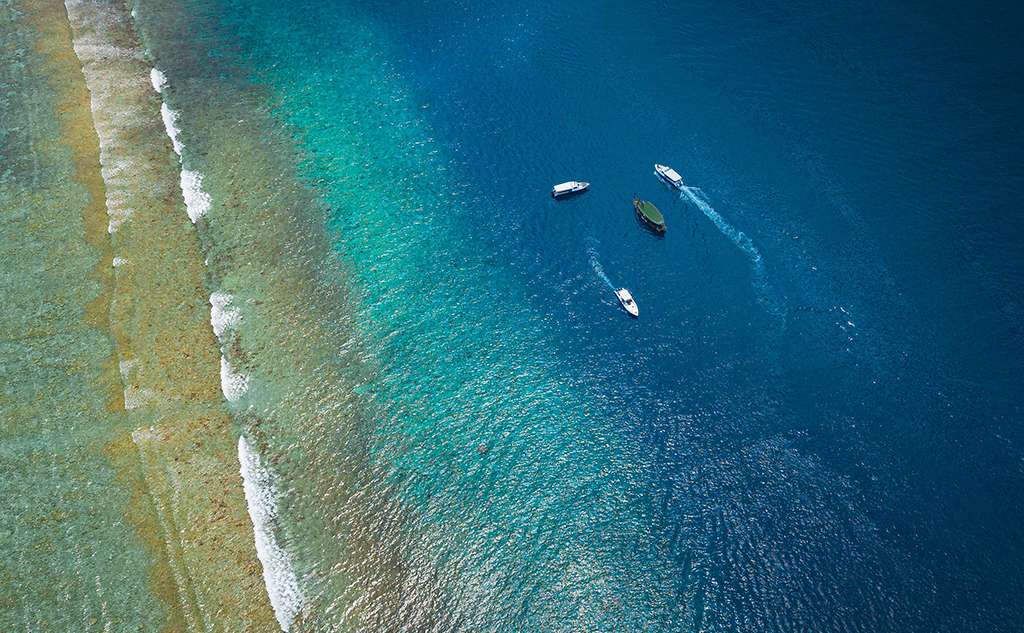The Treaty for Protection of the High Seas, the Convention for Ship Recycling, the International Strategy for Decarbonisation of Maritime Transport, the European Regulation related to “FuelEU Maritime”, and more; summer 2023 has seen the adoption or entry into force of major texts for protection of the seas and coastlines at international level. Meanwhile, France should soon be publishing its new National Strategy for the Sea and Coastline, currently in consultation.
The first High Seas Treaty
The High Seas (or “international waters”) comprise the parts of the sea found outside areas of national sovereignty and the Exclusive Economic Zones of coastal states. Making up over 60% of the oceans’ surface area and almost half of Earth’s surface area, the high seas have until now enjoyed no specific protection.
On 19 June, the United Nations Member States adopted the first international Treaty for the protection of the High Seas (or BBNJ, Biodiversity Beyond National Jurisdiction), with the aim of combating biodiversity loss and the degradation of ocean ecosystems due to climate change, pollution, and non-sustainable exploitation. Aiming to better regulate the conservation and sustainable utilisation of marine biodiversity on the high seas, this Treaty sets out six goals: the definition of a regulatory framework; recognition as humanity’s shared heritage; the internationalisation of decisions on environmental impact studies; the fair and equitable sharing of the benefits emerging from marine genetic resources; the creation of Marine Protected Areas to preserve, restore and maintain biodiversity and ecosystems, and ultimately the development of knowledge, scientific understanding and technical innovations.
Following the adoption of a Global Biodiversity Framework during COP15 in December 2022, this Treaty provides the opportunity to create a tool to attain the conservation objectives seeking to protect at least 30% of the planet’s oceans by 2030 (the “30X30” target). Due to be signed in September 2023, this will be ratified once national parliaments have approved the provisions and implementations and will come into force once 60 States have ratified it.
Entry into force of the Hong Kong Convention for Ship Recycling (HKC)
The Hong Kong Convention for the Safe and Environmentally Sound Recycling of Ships was adopted in 2009 to “ensure that ships … after reaching the end of their operational lives, do not pose any unnecessary risk to human health and safety or to the environment.” It imposes responsibilities and obligations on all parties involved: ship owners, shipbuilders, ship recycling facilities, flag states, port states and recycling states.
To enter into force however, this Convention must count on the support of at least 15 states, representing at least 40% of the gross tonnage of the global commercial shipping fleet and a ship recycling capacity of at least 3% of the gross tonnage of all merchant fleets of the states involved. With Bangladesh – one of the largest ship recyclers in the world in terms of capacity – joining at the end of June, together with Liberia, one of the biggest flag states in the world in terms of tonnage, all these criteria are now met. In fact, the Convention now has the support of 22 states, representing 45.81% of gross tonnage of the global commercial shipping fleet, while the annual recycling volume of the contracting states over the last 10 years represents 3.31% of the required recycling volume. As a result, the Convention can now come into force within 24 months, so by the end of June 2025.
As from then, ships being recycled must hold an inventory of potentially dangerous materials on board. Installations authorised to recycle ships must provide a recycling plan for each ship concerned. And governments must ensure that recycling installations falling under their jurisdiction conform with the Convention.
Revised IMO strategy to reduce emissions from maritime transport
At the start of July, the member States of the International Maritime Organisation gathered within the Marine Environment Protection Committee (MEPC), to adopt the 2023 IMO strategy on the reduction of GHG from shipping. This resulted in stronger targets for combating harmful emissions. This strategy includes the goal of reducing to zero the net GHG emissions from international maritime transport by around 2050, a commitment to guarantee the adoption of alternative fuels with zero or near-zero GHG emissions by 2030, and indicative check-points for 2030 – 2040. Within this framework, “the level of carbon emissions from ships must reduce through improved fuel efficiency for new vessels, with the level of emissions from international maritime transport similarly reducing; the adoption of techniques, zero or near-zero GHG emission fuels and/or energy sources must increase and GHG emissions from international maritime transport must be reduced to net zero.” Indicative check-points notably include reduction of at least 20% of total annual emissions by 2030 compared to 2008 levels (with the goal of achieving -40%) then at least -70% by 2040 (striving for -80%).
To attain these goals, the Strategy recommends several points including the creation of a standard for marine fuels and the setting-up of a pricing mechanism for GHG emissions in the maritime sector.
A timetable has been established for the adoption of all the measures in this 2023 Strategy, and the revised IMO strategy regarding the reduction of GHG emissions from ships will be adopted in 2028.
European regulation on renewable and low carbon fuels
For its part, at the end of July, the EU Council adopted a new regulation relating to the “FuelEU Maritime” initiative, with the objective of increasing the demand for, and consistent use of, renewable and low carbon fuels and the reduction of GHG emissions from the maritime sector, while ensuring the fluidity of maritime traffic and avoiding the distortion of the internal market.
Alongside this, the reduction by up to 80% of the level of GHG by 2050, an incentive scheme for renewable fuels of non-biological origin, the planned exclusion of fossil fuels from certification processes, and dockside provision of electrical power for container carriers all feature among the main provisions of this regulation which also allows for several exceptions such as for outlying territories, small islands and areas that rely on being connected. We should also note that income derived from the implementation of the regulation (“FuelEU sanctions”) will be employed for projects that support the decarbonisation of the maritime sector through a mechanism of greater transparency.
A new National Maritime and Coastline Strategy in France
The State Secretariat for the Sea this summer launched a consultation for the SNML 2030 project developed with the members of the National Council for the sea and coastline (CNML – Conseil national pour la mer et le littoral), the Seafront Committees (CMF – Comités maritimes de façade) and all the maritime sectors. The SNML (Stratégie nationale Mer et Littoral) determines the main directions for French maritime policy, which are then set out for operational purposes in sea basin strategy documents (DSF – documents stratégiques de façade) and for overseas sea basins (DSBM – documents stratégiques de bassins maritime).
This second SNML targets 4 key priorities for the coming 6 years: carbon neutrality, biodiversity (protection and restoration), equity, sustainable economy. With this in mind, 18 projects have been defined, the first being to propose integrated and global planning for marine and coastal policies. The other 17 objectives – themselves set out as commitments and/or measures – are divided into 6 main themes:
– Protection of environments, resources, biological and ecological equilibrium and the preservation of sites, landscapes and heritage
– Risk prevention and management of coastlines
– Knowledge, research and innovation; education and training for sea-based careers
– Sustainable transition of maritime and coastal activities and making the most of natural mineral, biological and energy resources
– French participation in the development and implementation of integrated international and European policies for the protection and appreciation of maritime spaces and activities
– Governance linked with this strategy, the means to implement it along with monitoring and evaluation tools.
Once this consultation phase has been completed, the new SNML will be adopted by decree.




